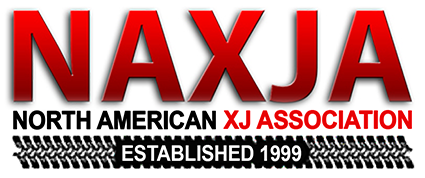lawsoncl
NAXJA Forum User
- Location
- North Idaho
It wouldn't hurt to try measuring the voltage at the connector to the fuel pump before you pull it. There is a chance it's a corroded connection or wiring issue.
Injectors themselves could be suspect.
Test the wiring for them with a noid light. Do that check for each plug.
As for testing the actual injectors, I would send them out to be serviced. InjectorRX is in Texas. That might be your easiest option.
It is not an apples to apples comparison, but I had a similar problem with my '90 Trans Am GTA. I would drive it somewhere, turn it off, come back to it and find that it would not start up. Get it towed home and it would fire right up again once back home. Frustrating as could be. No way to tools to proper place to work on it when it wouldn't start, and it would start when in the presence of the tools and place to work. For over a year I couldn't really use that car for anything. But, it finally got bad enough that it wouldn't start at home. In the process of testing each injector plug with a noid light I discovered that with one particular injector unplugged the car would start. It turned out that I had one injector that died and took down one entire bank (batch fire) when it died. It was probably a matter of wiring shorting out internally (essentially a coil) when hot. Finally that wiring got to the point it was permanently shorted out and I was able to diagnose the problem.
You could be looking for something similar. Not necessarily an injector. Could even be the ignition coil. The fun part is trying to figure out what is wrong when it is only wrong some of the time, and not generally at the time you are trying to find it.
CPS spacer? I am not aware of a need for such a thing. Where was that mentioned? I must have missed it.
The CPS bolts have a special shoulder on them, but I have not come across a spacer on any XJ CPS that I have dealt with.
As to replacing the injectors, I would start by trying to clean out the bores they sit in on the intake manifold. Lots of gunk collects down those holes. Use some degreaser or brake cleaner or oven cleaner and try to flush out those bores as well as you can before you work on pulling the injectors out. Do what you can with the cleaner of your choice, rinse with a hose (protect the throttle body and those sensors while you are doing that) and then blow things off with compressed air.
You need a special tool to disconnect the fuel line at the rail. I think the size is 5/16". It is a "Fuel Disconnect" tool. Can probably pick up a cheap one at most any auto parts store.
If the new injectors don't already have new O-rings, get them. You need 12.
Probably easiest to pull all 6 injectors along with the fuel rail (held down by 4 bolts IIRC), and then after you get the fuel rail and injectors out of the engine bay you can pull the clips (3/16" slotted screwdriver should be all you need--pay attention to keep them from flying off into oblivion) and pull the injectors out of the fuel rail. They can be very stiff to pull out. I have banged my elbow into something pretty hard while trying to get an injector out of a rail. Give yourself some room.
In order to get clearance to pull the fuel rail you will need to remove the throttle cable (and cruise control if you have it) and the bracket for the cables.
It is all pretty straightforward. The advance cleaning is probably the most useful part of the above advice. You would figure out all the rest out of necessity.
ETA: Label the wiring for which injector gets each plug. I think that matters on an XJ.
Funny, I just realized I replaced it not long before all of this started. If that's it, i'm going to really hate myself. I'll find a test procedure and report back.Faulty ignition switch?
And you have checked the wiring that goes between the intake and firewall right? I had an issue where it died when I put it in reverse, that was the culprit. Definitely check all around the steering column. Try tilting the wheel into different positions, I had a customer once have a crack in the steering column wiring from tilting the wheel up and down when getting in and out.
Actually, this may be the time to go with a toggle and momentary on switch to replace the whole key thing. It’s in a secure place in private land, so theft isn’t really a consideration
There are several circuits in the electrical part
of the switch, so converting to toggles would be
complicated.
You can run a hot wire directly to the positive coil
terminal to see if it will run...that may give an indication
to where the problem is.
This intermittent stuff can be really
annoying.
Since disturbing the ASD relay has an
effect, l'd suspect the relay itself.
(The contacts might be sticking or
have high resistance.)
